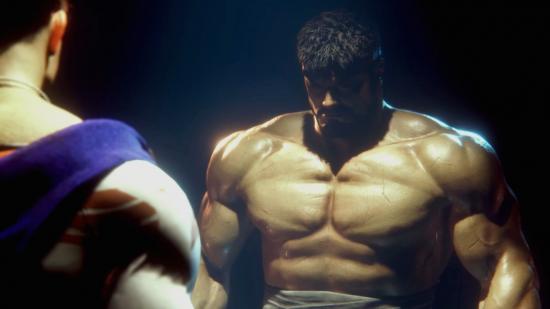After five years of Street Fighter 5, the next iteration of Capcom’s flagship fighting game franchise is on the horizon. While we know little about Street Fighter 6 aside from what was shown in a short teaser trailer, we reached out to competitive fighting game players Philip ‘KDZ’ Christopher Atkinson, Stephen ‘Spaceboy’ Agyemang, and Richard ‘Deznere’ DosSantos to reminisce on the franchise’s past and ponder on what could await us in the future.
Just as Street Fighter 5 is vastly different from Street Fighter 4, every major entry of the 2D fighter franchise plays vastly differently – and this new entry will be no different. “Aside from getting the basic principles of Street Fighter, SF6 will likely have different mechanics that will be the focus of your offense and defence,” Deznere tells The Loadout.
Street Fighter 5 has a reputation of being a very offense-oriented game – damage is high, and characters get access to a powerful comeback mechanic, called a V-Trigger, that grants them new abilities or powerful buffs that help them turn the tide of the round. KDZ suggests that the explosive nature of SF5 in particular could also be attributed to Stun, a mechanic which has been with the series since its second entry – and one he hopes doesn’t make a return in Street Fighter 6.
“In these games, when you get hit, and someone has some sort of meter advantage – let’s say they have V-trigger or whatever – they would hit you, put you in a mix-up situation, and then you’re stunned,” KDZ explains. “And then it extends the combo by a lot, and you’re in another mix-up situation. That’s what made the game feel so spewy – it doesn’t feel like that at the highest level, but the fact that you need to mould your entire gameplay around it is crazy.”
Spaceboy, on the other hand, wouldn’t mind seeing Stun in Street Fighter 6, arguing that it’s part of the franchise’s furniture these days. “Stun is a big part of Street Fighter’s history,” he says. “It’s one of the major appeals of defence.” But as Street Fighter fans will know, nothing is sacred in these games – with important features being removed without warning in the past. “Who knows what will happen,” he adds. “I’d rather Stun be there, though.”

While there’s clearly a debate on what features should – and shouldn’t – be brought across to the new game, there’s one thing that all pros are in agreement with: that Street Fighter 6 needs to be both challenging and mechanically interesting at every level.
“The goal for fighting game developers now, in my opinion, is understanding how to get both casual and competitive players to enjoy the game,” Spaceboy continues. “Street Fighter 4 was perfect, and Tekken 7 and King of Fighters 15 are modern examples of possibly recapturing the appeal. Street Fighter 5 feels like that but it feels restrictive because when introducing returning characters they took away more tools than they gave.”
Part of making games more challenging is making them more approachable and fairer for all. Deznere wants to see more tutorials in Street Fighter 6 – something which he feels Guilty Gear Strive and King of Fighters have done well recently. “I feel King of Fighters might have the best online structure, where in ranked and casual you can request to be in a room match after the set. There’s online training as well, so the ability to improve is always present,” he says.
One of the other key features Deznere wants to see properly implemented in Street Fighter 6 is netcode. “I think the addition of rollback netcode and good netcode is something a lot of games are doing correctly,” he says. But, while it should be included, it needs to be tested too. “I feel that games should be rigorously tested, especially with input delay and netcode.”
While the games on both console and PC are more or less identical, competitive play is split between the most convenient option – consoles – and the best performing one – PC. The PS4 pro version of Guilty Gear Strive registers at around three frames of delay, while its PS5 counterpart stands at five. This is a major issue for competitive play, where the difference between a blocked attack and losing the round is often determined by single-digit frames. “[Capcom needs to] try to get PC and consoles down to a similar delay in input,” Deznere adds. “Just so when tournaments happen the adjustment isn’t massive.”
While little is still known about the direction of Street Fighter 6, it’s clear FGC pros want to see subtle changes that’ll make it more inclusive of new players, while providing more hardcore ones with a fulfilling experience.
Only time will tell whether their dreams will come true, but for now, we can only cross our fingers and hope.

